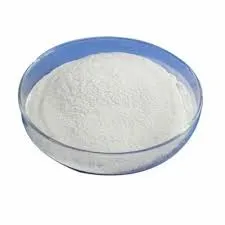
Dis . 19, 2024 06:55 Back to list
Understanding the Role of Latex Bonding Agents in Construction and Material Science
Understanding Latex Bonding Agent Properties and Applications
Latex bonding agents are versatile materials widely used in various industries due to their unique adhesive properties, flexibility, and ease of application. These agents play a crucial role in enhancing adhesion in numerous applications, from construction to textiles, and even in the automotive sector. This article explores the characteristics, benefits, and applications of latex bonding agents, providing a comprehensive understanding of their importance in modern manufacturing and construction processes.
Latex bonding agents are primarily composed of polymer emulsions, typically based on synthetic latex, such as styrene-butadiene (SBR) or polyvinyl acetate (PVA). These polymers are dispersed in water, forming a milky white emulsion that can be conveniently applied to surfaces. When the water evaporates, the latex films dry to create a strong, resilient bond between substrates. The elasticity and flexibility of the resulting film make latex bonding agents particularly effective in applications where movement or vibration occurs.
One of the standout features of latex bonding agents is their excellent adhesion properties. They adhere well to a variety of substrates, including wood, concrete, metal, and fabrics. This versatility makes them ideal for applications such as flooring installation, wallpapering, and laminating, where strong bonds are essential for durability. Additionally, latex bonding agents demonstrate good resistance to water, chemicals, and UV light, further enhancing their performance in both indoor and outdoor environments.
Another significant advantage of latex bonding agents is their user-friendly nature
. Being water-based, they are easy to clean up and less harmful to the environment compared to solvent-based adhesives. This characteristic is particularly appealing in today’s market, where sustainability and environmental concerns are increasingly prioritized. Many latex bonding agents are also non-toxic and emit low levels of volatile organic compounds (VOCs), making them safer for both users and the environment.latex bonding agent

Latex bonding agents find applications across various industries. In construction, they are commonly used as admixtures in cement and plaster to improve the bonding properties and flexibility of the materials. This is particularly important in applications like tile setting, where a strong bond is necessary to withstand the stresses from temperature changes and movement. Furthermore, latex bonding agents are used in the production of synthetic turf, sealing coatings, and in the fabrication of various construction materials, enhancing the performance and longevity of these products.
In the textile industry, latex bonding agents are employed to bind fabrics, create non-woven materials, and provide water resistance. They play a critical role in the production of indoor and outdoor textiles, ensuring durability and performance in various weather conditions. Additionally, these agents are utilized in coatings for various materials to provide a protective layer that enhances longevity and performance.
The automotive industry also benefits from latex bonding agents, particularly in the manufacturing of interior components. These agents are used to bond upholstery to various substrates, providing a strong and flexible bond that can withstand the rigors of everyday use. The lightweight and flexible nature of latex bonding agents also contributes to fuel efficiency in vehicle design, making them an integral part of modern automotive manufacturing.
To sum up, latex bonding agents are an essential component in various industries due to their exceptional adhesive properties, environmental benefits, and versatility. Their applications range from construction to textiles and automotive manufacturing, demonstrating their importance in enhancing the performance and durability of numerous products. As industries continue to evolve and prioritize sustainability, the role of latex bonding agents is likely to expand, further solidifying their place in innovative manufacturing processes.
In conclusion, understanding the properties and applications of latex bonding agents is vital for professionals in various fields. Their unique characteristics make them an indispensable tool for achieving strong, flexible, and durable bonds, contributing significantly to multiple industries' advancements and innovations. As technology progresses, the development of new formulations and applications for latex bonding agents will continue, driving further enhancements in efficiency and sustainability across various sectors.
-
Versatile Hpmc Uses in Different Industries
NewsJun.19,2025
-
Redispersible Powder's Role in Enhancing Durability of Construction Products
NewsJun.19,2025
-
Hydroxyethyl Cellulose Applications Driving Green Industrial Processes
NewsJun.19,2025
-
Exploring Different Redispersible Polymer Powder
NewsJun.19,2025
-
Choosing the Right Mortar Bonding Agent
NewsJun.19,2025
-
Applications and Significance of China Hpmc in Modern Industries
NewsJun.19,2025







